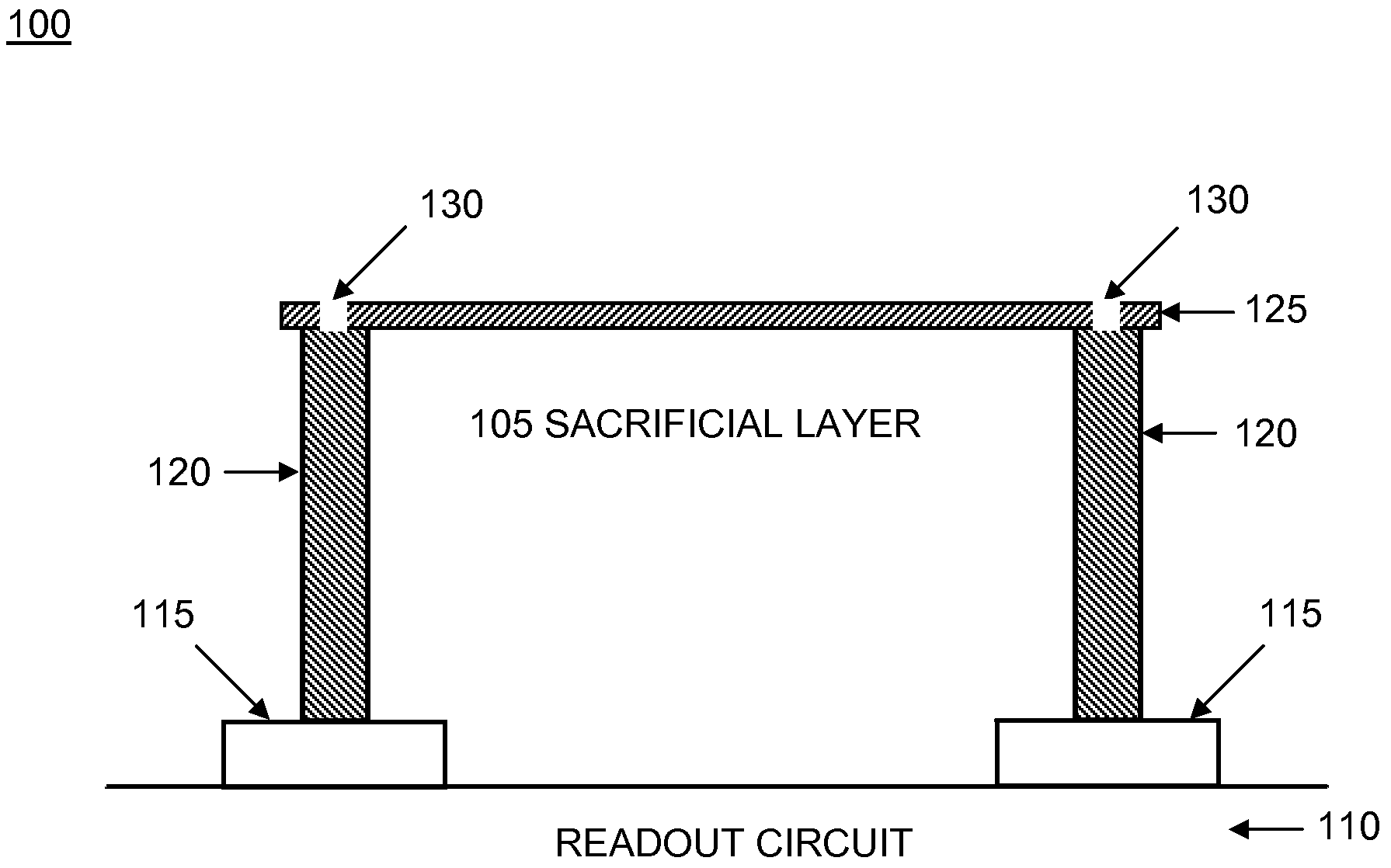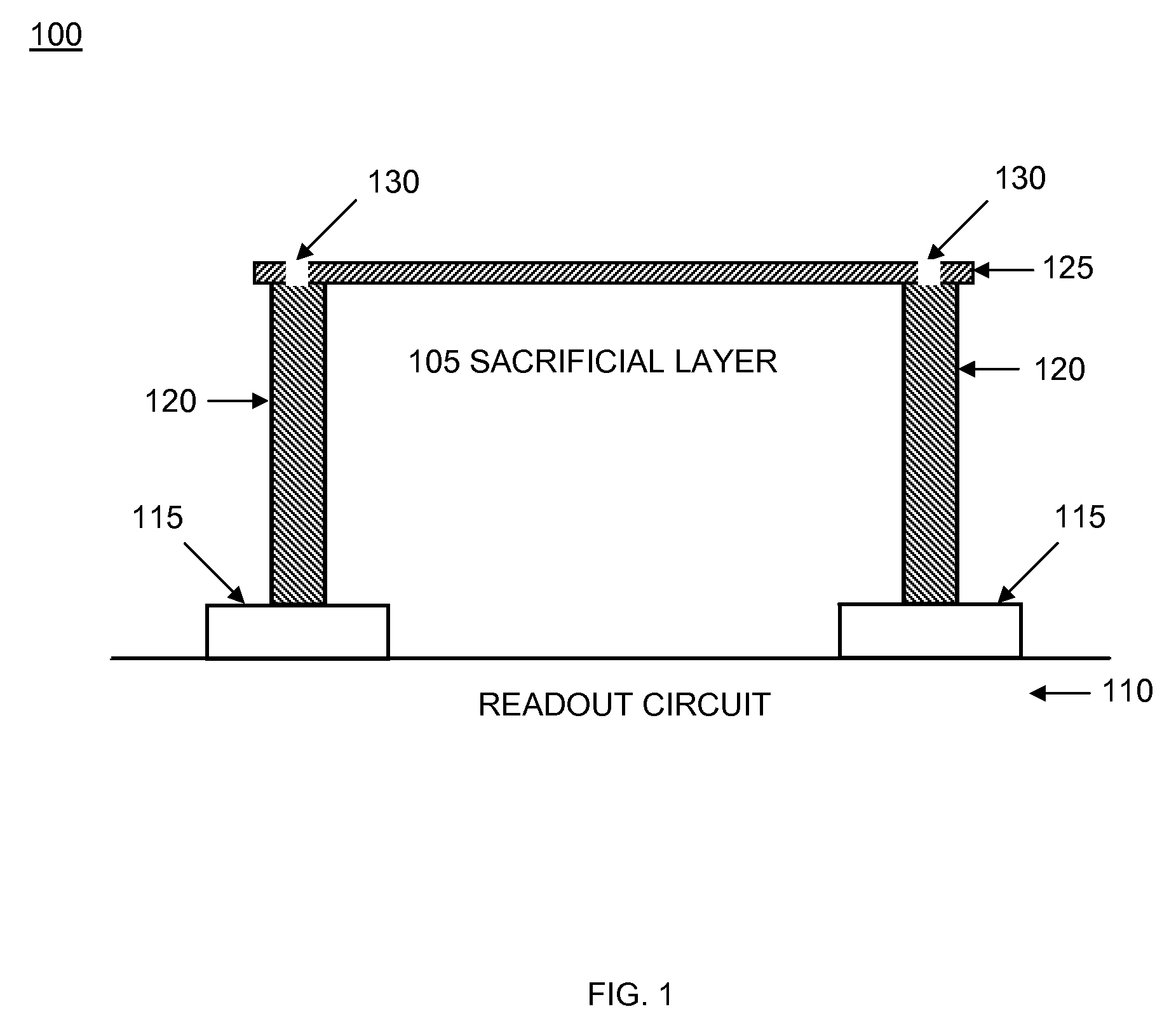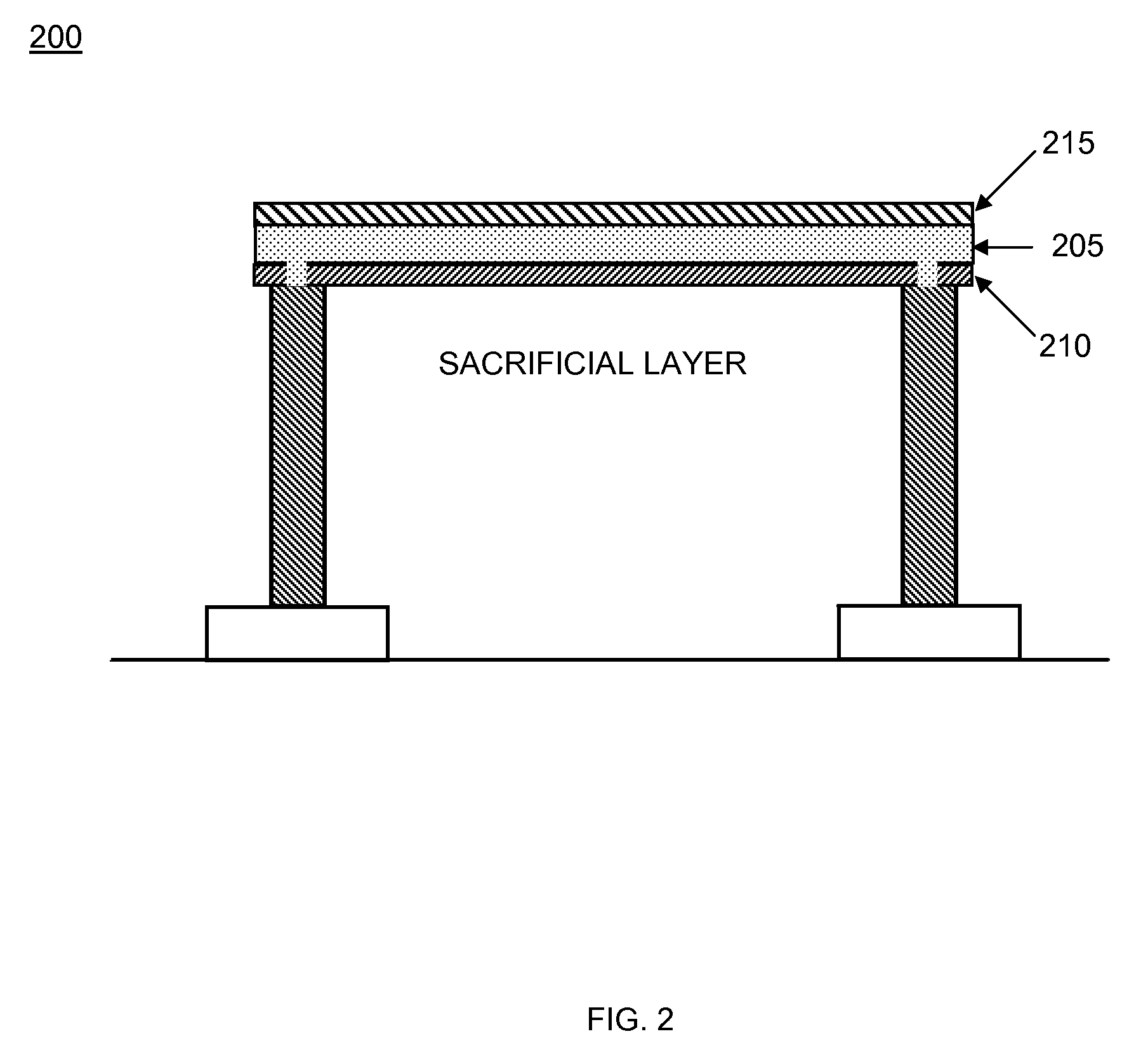Microbolometer pixel and fabrication method utilizing ion implantation
- Summary
- Abstract
- Description
- Claims
- Application Information
AI Technical Summary
Benefits of technology
Problems solved by technology
Method used
Image
Examples
Embodiment Construction
[0031]A pixel and a process for manufacturing a microbolometer pixel using ion implantation according to the present invention is described as follows.
[0032]FIG. 1 is a cross section view of the initial fabrication steps 100 depicting elements around sacrificial layer 105. Underlying readout integrated circuit (ROIC) 110 has metalized pads 115 providing electrical connection to metal filled posts 120. First dielectric layer 125 is adjacent metal filled posts 120. Contact openings 130 penetrate first dielectric 125 to metal posts 120.
[0033]FIG. 2 is a cross section view of vanadium oxide VOx and protective dielectric film deposition steps 200. Vanadium oxide VOx layer 205 is deposited on dielectric such as silicon nitride 210. The original VOx layer thickness is typically 400 to 1500 Angstroms. Protective second dielectric layer 215 is deposited on VOx layer 205. These layers are for the formation of the suspended pixel.
[0034]FIG. 3 is a cross section view of photoresist deposition a...
PUM
 Login to View More
Login to View More Abstract
Description
Claims
Application Information
 Login to View More
Login to View More - R&D
- Intellectual Property
- Life Sciences
- Materials
- Tech Scout
- Unparalleled Data Quality
- Higher Quality Content
- 60% Fewer Hallucinations
Browse by: Latest US Patents, China's latest patents, Technical Efficacy Thesaurus, Application Domain, Technology Topic, Popular Technical Reports.
© 2025 PatSnap. All rights reserved.Legal|Privacy policy|Modern Slavery Act Transparency Statement|Sitemap|About US| Contact US: help@patsnap.com



